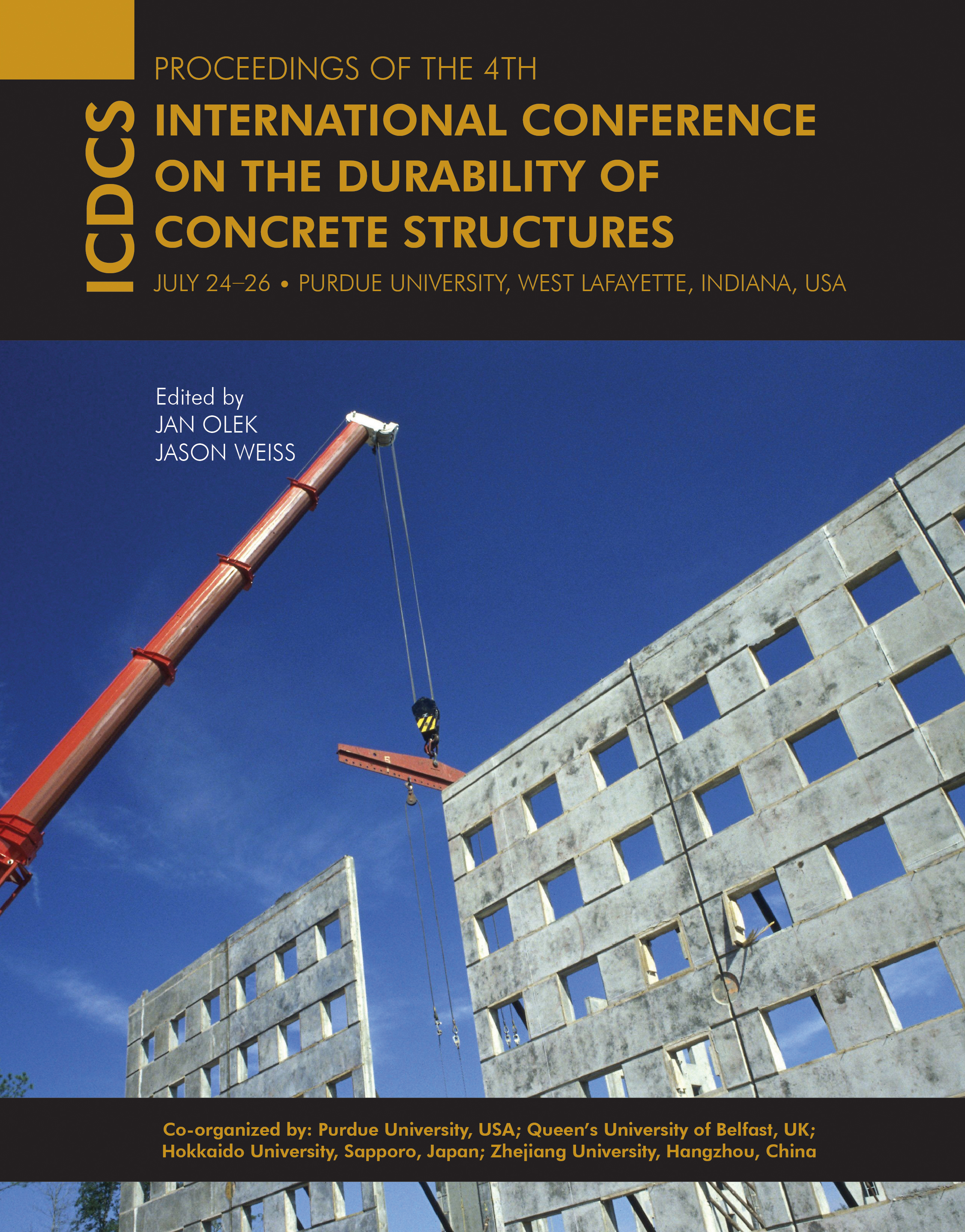Keywords
phosphoaluminate cement, cement content, chloride penetration, mix proportion parameter
Abstract
The chloride penetration resistance of phosphoaluminate cement (PAC) concrete was investigated in this study. The effects of mixture proportioning parameters, including cement content, water–cement ratio (w/c), and superplasticizer content on chloride ion penetration resistance of PAC concrete were investigated by the rapid chloride migration test (RCM). The result shows that the increase of cement content and the decrease of w/c can reduce the coefficient of chloride ion penetration of PAC concrete at a certain range. Moreover, the penetration of chloride ion can be declined effectively when polycarboxylate superplasticizer is employed. The PAC concrete exhibited better chloride penetration resistance compared with normal Portland cement (PC) concrete prepared with the same mixture proportioning parameters. This is due to the fact that the hydration mechanism and the hydration products of PAC concrete are different from that of PC concrete.
DOI
10.5703/1288284315407
Included in
Research on Chloride Penetration Resistance of Phosphoaluminate Cement Concrete
The chloride penetration resistance of phosphoaluminate cement (PAC) concrete was investigated in this study. The effects of mixture proportioning parameters, including cement content, water–cement ratio (w/c), and superplasticizer content on chloride ion penetration resistance of PAC concrete were investigated by the rapid chloride migration test (RCM). The result shows that the increase of cement content and the decrease of w/c can reduce the coefficient of chloride ion penetration of PAC concrete at a certain range. Moreover, the penetration of chloride ion can be declined effectively when polycarboxylate superplasticizer is employed. The PAC concrete exhibited better chloride penetration resistance compared with normal Portland cement (PC) concrete prepared with the same mixture proportioning parameters. This is due to the fact that the hydration mechanism and the hydration products of PAC concrete are different from that of PC concrete.





